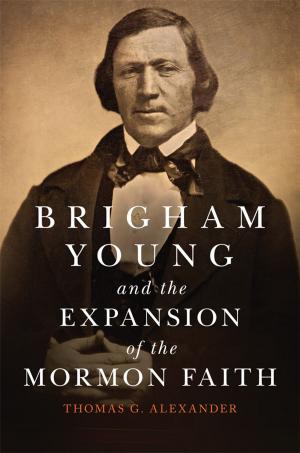An Osage Journey to Europe, 1827–1830
Three French Accounts
Nonfiction, Social & Cultural Studies, Social Science, Cultural Studies, Native American Studies, History, Americas, Native American, United States, 19th Century| Author: | William Least Heat-Moon, James K. Wallace | ISBN: | 9780806151120 |
| Publisher: | University of Oklahoma Press | Publication: | November 18, 2013 |
| Imprint: | University of Oklahoma Press | Language: | English |
| Author: | William Least Heat-Moon, James K. Wallace |
| ISBN: | 9780806151120 |
| Publisher: | University of Oklahoma Press |
| Publication: | November 18, 2013 |
| Imprint: | University of Oklahoma Press |
| Language: | English |
In 1827 six Osage people—four men and two women—traveled to Europe escorted by three Americans. Their visit was big news in France, where three short publications about the travelers appeared almost immediately. Virtually lost since the 1830s, all three accounts are gathered, translated, and annotated here for the first time in English. Among the earliest writings devoted to Osage history and culture, these works provide unique insights into Osage life and especially into European perceptions of American Indians.
William Least Heat-Moon’s introduction poignantly tells of people leaving one alien nation, the United States, to visit an even more alien culture an ocean away. In France the Osages found themselves lionized as “noble savages.” They went to the theater, rode in a hot-air balloon, and even had an audience with the king of France. Many Europeans ogled them as if they were exhibits in a freak show. As the entourage moved through Belgium, Holland, Germany, Switzerland, and Italy, interest in the Osages declined. Soon they were reduced to begging in the suburbs of Paris, without the means to return home.
Translated by Heat-Moon and James K. Wallace, the three featured texts are surprisingly accurate as basic descriptions of Osage history, geography, and lifeways. The French authors, influenced by racist and sexist expectations, misinterpreted some of the behaviors they describe. But they also dismiss rumors of cannibalism among the Osages and observe that “the behavior of some whites . . . was not conducive to giving the Indians a favorable opinion of white morality.”
An Osage Journey to Europe, 1827–1839 offers scholars and general readers both a compelling story and a singular glimpse into nineteenth-century cultural exchange.
In 1827 six Osage people—four men and two women—traveled to Europe escorted by three Americans. Their visit was big news in France, where three short publications about the travelers appeared almost immediately. Virtually lost since the 1830s, all three accounts are gathered, translated, and annotated here for the first time in English. Among the earliest writings devoted to Osage history and culture, these works provide unique insights into Osage life and especially into European perceptions of American Indians.
William Least Heat-Moon’s introduction poignantly tells of people leaving one alien nation, the United States, to visit an even more alien culture an ocean away. In France the Osages found themselves lionized as “noble savages.” They went to the theater, rode in a hot-air balloon, and even had an audience with the king of France. Many Europeans ogled them as if they were exhibits in a freak show. As the entourage moved through Belgium, Holland, Germany, Switzerland, and Italy, interest in the Osages declined. Soon they were reduced to begging in the suburbs of Paris, without the means to return home.
Translated by Heat-Moon and James K. Wallace, the three featured texts are surprisingly accurate as basic descriptions of Osage history, geography, and lifeways. The French authors, influenced by racist and sexist expectations, misinterpreted some of the behaviors they describe. But they also dismiss rumors of cannibalism among the Osages and observe that “the behavior of some whites . . . was not conducive to giving the Indians a favorable opinion of white morality.”
An Osage Journey to Europe, 1827–1839 offers scholars and general readers both a compelling story and a singular glimpse into nineteenth-century cultural exchange.















